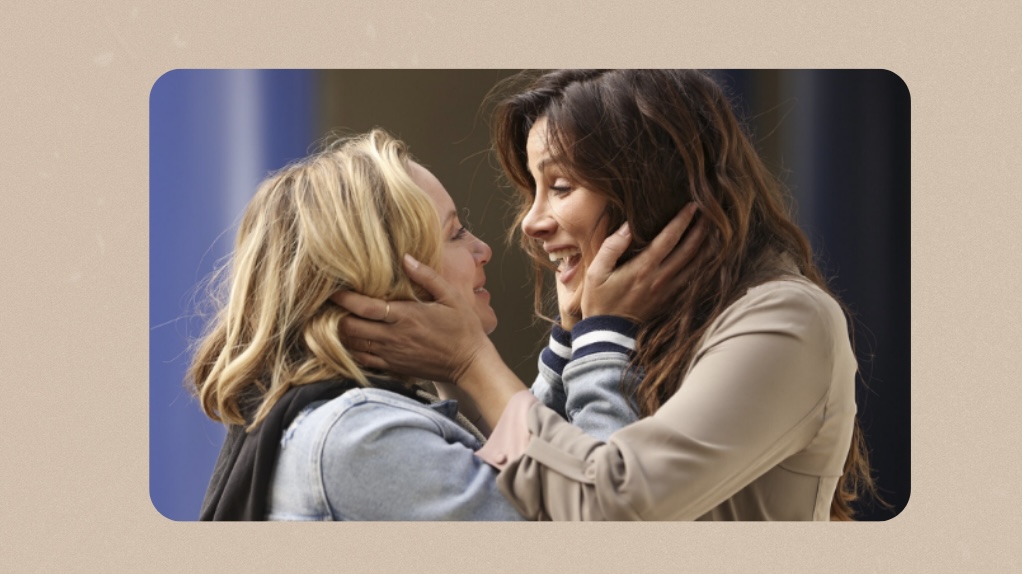It’s still bisexual awareness week, and what better to celebrate than to acknowledge the female characters that paved the way for better bisexual representation on screen?
Callie Torres, Grey’s Anatomy

For the longest time, Callie Torres was the longest running LGBTQ+ character on television. Callie’s story is heartwarming as we get to witness her discover her sexuality in real time on screen, as she struggles to put a label to her attraction. We see her character begin by dating and being married to men, followed by the discovery of her attraction to women. The reaction to her journey is saddening and proves the misunderstanding surrounding bisexuality. When dating women, Callie is asked if she’s a lesbian by her female partners, and often discredited because of her past with men. When dating men, her relationships with women are fetishised. Nonetheless, Callie Torres is a headstrong character who stands her ground and proclaims she is bisexual as early as 2009. She is one of the earliest bisexual characters to have graced the silver screen, and her legacy lives on.
So I’m bisexual! So what? It’s a thing, and it’s real. I mean, it’s called LGBTQ for a reason. There’s a B in there, and it doesn’t mean ‘badass’. Okay, it kinda does, but it also means ‘bi’.
Amelia Shepherd, Grey’s Anatomy

Moving onto the newest longest running LGBTQ+ character on television, Callie Torres passed the torch to another queer icon, Amelia Shepherd. Amelia made her debut on Grey’s Anatomy spin-off Private Practice, but went on to join Grey’s Anatomy as a regular in the later seasons. Throughout most of the seasons, we see Amelia date and be married to men, even having a child with one. However, her attraction to other genders is not hidden as she hints at it multiple times. In the most recent seasons of Grey’s, Amelia gets into a relationship with Kai Bartley, a non-binary neuroscientist. During the relationship, Amelia is the happiest she has been. What is heartwarming about her process is that she doesn’t get treated differently or invalidated because of her new relationship, it is treated as normal, which is refreshing to see after the incessant pressure of coming out. Amelia doesn’t have to come out, she just is.
Things and people don’t need to be constantly defined in order to be loved unconditionally.
Annalise Keating, How To Get Away With Murder

Annalise Keating is the protagonist of How To Get Away With Murder. Her character defies expectations from all sides — Viola Davis herself having said she didn’t expect to get the role as she deemed they would look for a white actress. Annalise goes through a lot of trials in her life, but her journey with bisexuality is not treated differently. Annalise dated Eve, a fellow lawyer, before marrying a man. Years later, the two reconnect and the flame of their old love is reignited. Annalise is a great example of bisexual representation, her sexuality being treated as another facet of herself, rather than encompassing her entire self.
I’m ambitious, black, bisexual, angry, sad, strong, sensitive, scared, fierce, talented, exhausted — and I am at your mercy.
Casey Gardner, Atypical

Casey’s character is interesting to watch, as she presents more masculine yet she’s in a relationship with a boy. A lot of speculation about her sexuality ensued due to her gender presentation, with people thinking she was a lesbian. As her character arc developed, Casey discovered her attraction towards girls — however, when she was at a LGBTQ+ speak group with her girlfriend, Casey realised she didn’t feel the way other lesbians described. That’s because her attraction to boys was real, and she found herself identifying with bisexuality. It’s a key example of why someone’s aesthetic presentation shouldn’t be the concluding evidence of who they are. Her character tells us bi girls can date boys, they can present masculine, and they are not less bi because of it.
So I think I’m bi.
Nina Zenik, Shadow and Bone

Nina Zenik is a character that first appeared in the spin-off book series Six of Crows, however with the TV adaptation of Shadow and Bone, Nina made her screen debut earlier than expected. Nina’s bisexuality is much more apparent in the books, but it is still present in the TV show. There is no questioning or discovering who she’s attracted to — she just is her confident self with her sexuality, as she is with everything else. Nina Zenik starts dating Matthias Helvar, which brings forth the message that bi women are still bi even when they’re in a straight-presenting relationship. Nina is unapologetic about who she is, and having a character with such strong self-esteem is refreshing to witness on television.
I flirt with the women too.
Nico Minoru, Runaways

Nico Minoru is a powerful sorceress within the Marvel Cinematic Universe. In first season of Runaways, Nico has a relationship with Alex Wilder, until a fight leaves tensions between them. Although Nico forgives him for the fight, she finds more comfort in the relationship she builds with Karolina Dean. Seeming to be polar opposites at first, with Nico being a wiccan goth girl and Karolina a devoted church girl, they find they have more in common than they expected. Nico’s bisexuality is not invalidated because she dated a boy then a girl, what surprises the group of friends is that Nico and Karolina would date given they couldn’t be more different in their eyes. The representation is another case of bisexuality being treated as regular, without needing to come out.
I’ll come back for you.
Maya Bishop & Carina Deluca, Station 19

Maya and Carina both first appeared in Grey’s Anatomy, after which they went on to join the spin-off Station 19. Contrary to the beginnings of Grey’s, where Callie Torres had to fight to be acknowledged in her sexuality, Maya and Carina’s bisexuality was not questioned. Before they got together, Maya dated Jack and had other hook-ups with men and women, Carina dated many women as well as men. It is not being seen as “greedy”, which the worst bi stereotypes would say, instead it’s just regular dating and while trying to find your person. It is important to show bisexuals dating multiple genders is normal and it doesn’t make them less bisexual because of it — on the contrary, it’s kind of what being bisexual implies. Another factor I like in Maya and Carina’s relationship is that their sexuality isn’t erased just because they’re together. They’re not suddenly lesbians because they’re in a sapphic relationship. It’s important to remember that no matter who a bisexual person ends up with, it doesn’t mean their bisexuality disappears.
Korra & Asami, Legend of Korra

You might be seeing this and wondering, but what do you mean? How can a Nickelodeon show have a couple made of two bisexual women? Well, it happened! The show is a bit more subtle, but the graphic novels who serve as continuation for the show confirmed the couple. Korra is the next Avatar after Avatar Aang (Avatar: The Last Airbender). She starts having feelings for Mako, a fire-bender, except Mako is dating Asami. When him and Asami break up, Kirra starts dating him. There is a rivalry that ensues between the two women, but that is quickly put to rest as Korra goes through some traumatizing events and breaks up with Mako. A friendship blooms between Korra and Asami, that soon sees itself become more. Their feelings are evident even in the cartoon show, which ends with them leaving together for another land while holding hands. The creator of the show develops their relationship further in the graphic novels, and we see the two as girlfriends.
For more representation, check out this article:




